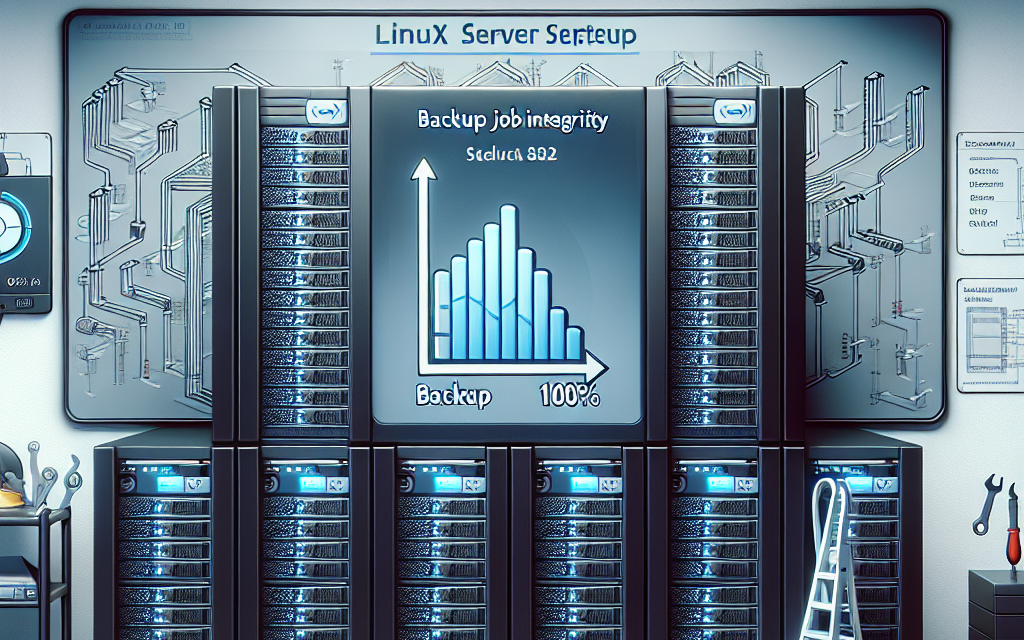In today’s digital age, data is one of the most valuable assets for any organization. Effective backup strategies are critical not only for data recovery but also for ensuring business continuity. However, having a backup is only half the battle; ensuring that those backups are both complete and uncorrupted is equally important. In this article, we’ll explore effective methods to monitor, verify, and maintain the integrity of backup jobs on Linux servers.
Understanding Backup Job Integrity
Backup job integrity refers to the reliability and correctness of backups. This entails ensuring that the data backed up is not only accurate but also accessible and usable when needed. Backup jobs must be monitored rigorously to detect any discrepancies, failures or corruption in your backup routines.
Why Backup Integrity is Critical
- Data Loss Prevention: Corrupted backups can lead to catastrophic data loss.
- Regulatory Compliance: Many industries require adherence to standards that necessitate reliable data backups.
- Business Continuity: Ensuring that backups are usable keeps businesses operational in times of crisis.
Key Components of Backup Monitoring
Here are some key aspects you should consider to ensure the integrity of your backup jobs:
1. Automated Job Scheduling and Monitoring
Tools like cron in Linux can help automate backup jobs. Combined with monitoring scripts, you can set up notifications for failures. Here’s a simple cron job entry:
bash
0 2 * /usr/bin/rsync -a /source/ /backup/ && echo “Backup succeeded” >> /var/log/backup.log || echo “Backup failed” >> /var/log/backup.log
This cron job runs every day at 2 AM, attempting to sync files and logging success or failure.
2. Log Monitoring
Setup log monitoring to keep track of backup operations. Continuous monitoring of logs can catch issues early. For example, utilizing tools like logwatch can help you keep track of your backups.
bash
logwatch –detail High –mailto [email protected] –range All
This command sends a detailed report to the admin email, summarizing any anomalies in logs.
3. Integrity Checks Using Checksums
Generate checksums for the files that you back up. Tools such as md5sum or sha256sum can help verify the integrity of files during backup and after restoration.
Example command:
bash
find /backup/ -type f -exec md5sum {} \; > /backup/checksums.md5
You can later compare these checksums to ensure that no corruption has occurred:
bash
md5sum -c /backup/checksums.md5
4. Test Restores Regularly
It’s essential to periodically test your backups. This means restoring backups in a controlled environment to verify that they work as expected. A simple approach to achieve this is to schedule test restores as part of your backup routine.
bash
rsync -a /backup/ /test-restore/
5. Implement Monitoring Tools
Leverage monitoring solutions such as Nagios, Zabbix, or Prometheus to keep an eye on your backup jobs. Custom scripts can be integrated to alert you in case a backup fails or runs longer than expected.
6. Data Redundancy
Store backups in multiple locations to mitigate risks. Using both on-premise and cloud-based backup solutions is a good practice.
7. Regular Reporting
Create reports on backup status and integrity. Scheduling weekly or monthly reports can provide a long-term perspective on data management.
bash
echo “Backup Status Report” > /var/log/backup_report.log
cat /var/log/backup.log >> /var/log/backup_report.log
Conclusion
Ensuring backup job integrity on Linux servers is a multi-faceted approach that requires careful planning, monitoring, and testing. Automating tasks, continuous monitoring, implementing checksums, conducting regular restore tests, and leveraging monitoring tools will help safeguard your data and provide peace of mind. With the right practices, you can ensure your backups are not just a plan, but a robust line of defense against data loss.
By implementing these strategies, you can foster a reliable backup environment, helping to maintain integrity in your Linux server management. Remember, a backup is only as good as its integrity; invest the time to secure your invaluable data.
This content is geared towards helping IT professionals and system administrators enhance their backup strategies in a Linux environment. For ongoing discussions and insights, don’t forget to subscribe to our WafaTech Blog!





